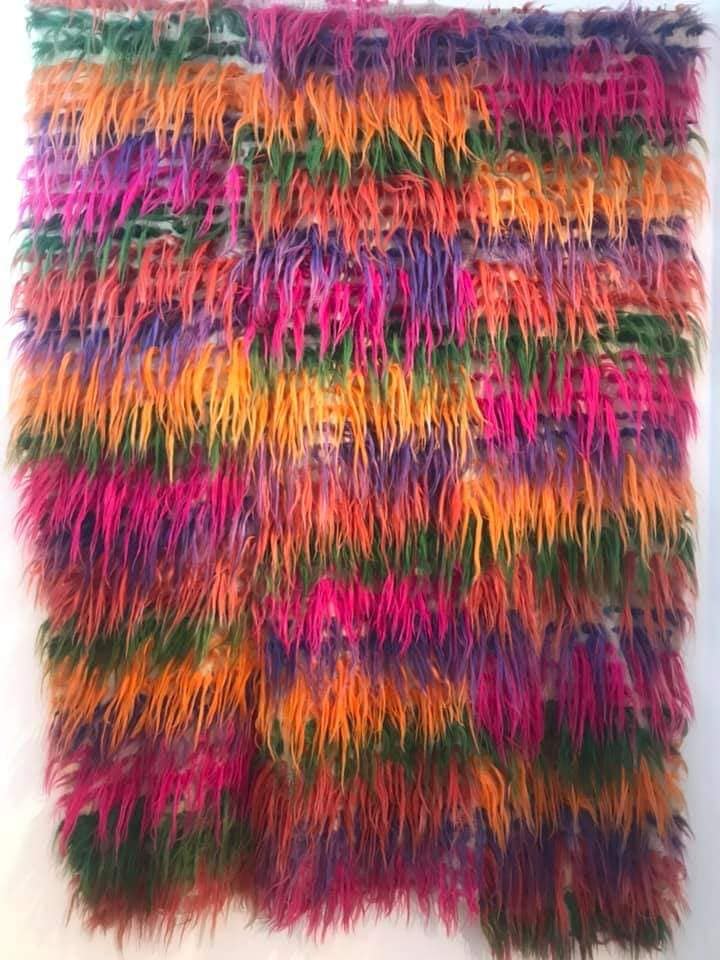Muzeul Textilelor se află în comuna hunedoreană Băița, fiind un obiectiv unic în România (primul de acest tip din țară) și chiar în estul Europei. Acesta a fost inaugurat oficial în anul 2018, în centrul comunei, fiind un muzeu privat ce aparține familiei Zaharia, mai exact doamnei Florica Zaharia o româncă din judeţul Hunedoara care a fost, jumătate din viață, director al departamentului de Textile din cadrul Muzeului Metropolitan de Artă din New York.
Practic, de muzeu se ocupă întreaga familie (Florica, Ana și Romulus Zaharia-FARZ). Colecția prezentată în cadrul muzeului, formată de-a lungul a patru decenii, cuprinde mii de piese și instrumentar textil din România, estul și centrul Europei, vestul Europei, Orientul Apropiat, India, Asia Centrală, Japonia, China, sud-estul Asiei, Africa, Oceania și America.
Colecția cuprinde aproximativ 12.000 de piese și instrumentar textil, iar accentul este pus asupra materialelor și tehnicilor textile folosite pentru realizarea unor obiecte de vestimentație, unice, în toată lumea. Expoziția cuprinde piese din diferite culturi incluzând pânze realizate dintr-o mare varietate de fibre textile, instrumentar textil, costume, accesorii și textile pentru interioare.









The museum has three locations
The main location of the museum, Building A, is in a house built in the center of Băiţa commune in 1857. Building B, where the offices’, a conservation laboratory, the conference room and an Art Café are located, is a building from the '60s. , which was the local department store. Building C of the museum, displaying the typical domestic textile production of Hunedoara county, exemplified by objects and a garden focused on textile plants, it is in a peasant household from Hărţăgani village. The household has five constructions, three of them being dated and attributed to Tripon Petru, 1902, 1912, and Popa Aron, 1936.
Research, collection and sharing of the collection, the mission of the museum
The mission of the first textile museum, opened in Romania, includes the preservation, collection, research and sharing of the collection and other resources with specialists and the general public. The museum's activity focuses on Romanian and Eastern European textile materials, but also on the related textile technologies to be integrated. The activity of the museum is a complex one, considering the fact that the emphasis is also on research and professional interaction between young professionals from the Romanian and international community and experts.



A collection of 12,000 pieces
From the opening of this textile museum, on the initiative of a local woman who lived a good part of her life in America, Florica Zaharia, declares: “The museum is a place where we want to build a bridge between cultures, where Romanian and the Eastern European culture can be found in a global concept. It's not easy, but we managed to find three locations for the museum: one is the former department store building, built in 1960, which we refurbished, another is the house in front of Băița City Hall, from the 19th century, and the third, about 100 years old, is in the village of Hărţăgani. Each represents a different goal. I must thank the institution that has played an important role in this project and in our training. That’s the Metropolitan Art Museum in New York, where I've worked for almost half my life. They showed their support in different ways and sent us their messages. Colleagues from the Department of Textile Conservation wished to donate the plaque we are unveiling today and I am delighted. Another support of the Metropolitan Museum is a major donation of 1,871 objects. These objects in the museum come from different cultures, not only from Romania. The pieces come from almost 100 countries and together form a collection of almost 12,000 pieces. We want to use this material and the museum's specialized library for educational programs, research programs, and exhibition programs and publications. ”









Who is Florica Zaharia
Dr. Florica Zaharia este o renumită specialistă în conservarea materialelor. Este originară din Hărţăgani, comuna Băiţa şi, după studiile de la Liceul Pedagogic, a urmat Şcoala Populară de Artă, apoi s-a înscris la cursurile Universităţii de Arte „Nicolae Grigorescu” Bucureşti.
S-a specializat în arte decorative, tapiseria şi structura textilelor. A decis în 1988 să plece din ţară şi a ajuns în Statele Unite. Experienţa, dar şi piesele create de ea i-au deschis porţile către celebrul ”the Met”, pe 1000 Fifth Avenue. Astfel, hunedoreanca a ajuns să facă parte din Departamentul de Conservare a Textilelor de la The Metropolitan Museum of Art din New York unde a şi deburat ca şi restaurator în laboratorul intituţiei.
În 2003 a ajuns chiar şefa acestui departament. După experiența din SUA a decis să se întoarcă în locurile natale, unde să prezinte colecția FARZ, așa cum este cunoscută suita de exponate adunate de Florica, Ana și Romulus Zaharia, ultimii doi fiind fiica și soțul artistei.



Photo source: Facebook / Textile Museum



